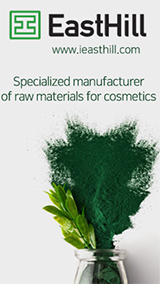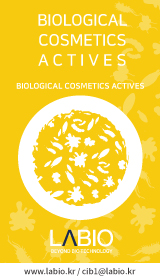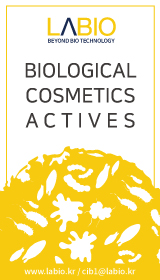
Since June of last year, the Korea Cosmetics Association has formed a public-private consultative body for regulatory innovation with the participation of experts from the Ministry of Food and Drug Safety, related institutions, and academia, and as the first step for a new leap forward for K-beauty, global standardization and currentization of regulations related to the cosmetics industry carried out activities for
Through six months of consultative body activities, the details of the innovation targets were greatly changed under the premise of △ conversion to a global negative system for fostering innovative and creative brands △ introduction of the K-beauty global safety management system △ establishment of a global standard quality management system. derived
The basic requirement and the biggest challenge for such regulatory innovation is that the current cosmetics law must be 'completely revised' to the level of 'newly enacted'. This not only has to go through the process of proposing a revision (proposal) and passing it in the plenary session of the National Assembly, but also needs to leave open the possibility that the initially intended direction and purpose may change in the process.
Regardless of future schedules, Cosmorning reviews the regulatory innovation tasks and directions presented by the Cosmetics Association through discussions with the Ministry of Food and Drug Safety for each issue and publishes detailed plans for them in series. The fourth topic of discussion is the step-by-step introduction of the K-beauty global safety management system. <Editor's Note>
Necessity and background of introduction of cosmetic safety management system
The final goal of the public-private consultative body, which was formed last year by the Ministry of Food and Drug Safety, which is a regulation-related working level department and private organizations/organizations led by the Korea Cosmetics Association, is to actualize Korea’s cosmetics regulation-related system to conform to global standards. .
Various plans, processes, and procedures for this have been discussed and are currently underway, but in the end, the key is how to ensure consumer safety and how to establish a cosmetics safety management system first.
Korea's cosmetics industry was a 'trade deficit' industry centered on domestic demand in the past, but now it has established itself as an 'export-oriented & trade surplus' industry that ranks third in the world after France and the United States.
On the other hand, in order for K-Beauty, which has grown into an export-oriented industry in a rapidly changing global market environment, to have a higher level of export competitiveness, Korea's cosmetics regulations should be converted to a global regulatory system through international harmonization, and how soon it will be stabilized and applied. It's no exaggeration to say that it depends on whether you can do it.
For cosmetics-related global regulations, △ prior management centered on the government in the past → a shift in the regulatory paradigm itself to a regulatory system led by the private sector △ safety management of cosmetics also shifts the focus and necessity to a market-oriented management system in which companies themselves take full responsibility for product safety. is the time to do The Korea Cosmetics Association said, “This change is because cosmetics, unlike pharmaceuticals, have a mild effect on the skin and hair of the human body, are significantly less likely to cause serious harm to the human body, and have a high fatality rate related to cosmetics. It is judged that it is because there is no record of the occurrence.”
In addition, “In the case of Europe and the United States, the government has already designated and managed raw materials that cannot be used in cosmetics and raw materials that are restricted for use through laws and regulations, while focusing on safety management such as ingredient risk assessment through monitoring, etc. It states that the responsibility for possible safety rests with the company.”
In addition, as China, Korea’s largest exporter, introduced the obligation to submit a safety evaluation report for permission and registration due to strengthened cosmetics-related regulations (implemented in May 2021), Korean cosmetics are also a company that can compete with advanced global companies in the global export market. The reality is that there is an urgent need to strengthen safety management capabilities.
Cosmetics Safety Management Current Status and Problems of Domestic and International Regulations
Looking at the current cosmetics safety management system, most countries around the world 'except China' △ the government designates and manages the mixing limit for some ingredients such as prohibited ingredients, preservatives, and pigments △ other ingredients are managed by the company's safety management A negative system is adopted to ensure that the products can be used under responsibility. △ The safety of cosmetics (finished) products is confirmed based on the safety of raw materials.
In other words, only China adopted a 'positive system' for its raw material management system, and the rest adopted a 'negative system'.
In the case of Korea, as the raw material management system has been converted into a negative system since 2012 and has been implemented, in principle, the responsibility for product safety management lies with the company.
However, as we have already reviewed three times, the situation is actually based on government (Ministry of Food and Drug Safety)-centered management, such as review and reporting based on the functional cosmetics system. (In the case of cosmetics for children, different applications are being made as companies are obliged to prepare and store product safety data)
In the end, the argument that export competitiveness should be strengthened through system improvement in line with global regulatory trends is gaining persuasiveness.
In this regard, the public-private consultative body including the Cosmetics Association pointed out that “this topic related to the cosmetics safety management system is a big change in which the responsibility for cosmetics safety management is shifted from government-centered to company-centered” and “to this end, each cosmetic company requires thorough preparation for related matters. In particular, considering that safety data on the raw materials currently used by Korean companies is extremely insufficient and there are almost no experts to evaluate them, it is also necessary to fully consider the need to build a safety management system in stages rather than en masse in a short period of time. will do”.
Step-by-step introduction and strengthening of support for the global safety management system
As pointed out above, considering the current state of the cosmetics industry in Korea, it should not be overlooked that hasty implementation may have adverse effects that can lead to contraction of the entire industry.
In other words, in order to strengthen the safety management capabilities of cosmetics companies to a global level, it is necessary to stably establish related regulations by gradually expanding and implementing the mandatory preparation and storage of 'safety data for each product' currently operated by children's cosmetics, etc. will be.
It can be understood in the same context as the argument that the functional cosmetics system should be excluded from the functional cosmetics area in turn, in order to induce a soft landing of the system, rather than causing confusion and damage to product development, sales and marketing of companies by temporarily abolishing the functional cosmetics system. can
In this regard, the government (Ministry of Food and Drug Safety, Ministry of Health and Welfare) provides support for establishing a safety management system, including △ establishment of a safety data database for existing raw materials △ training of experts in cosmetics safety evaluation, so that Korean cosmetics companies can adapt to and prepare for the changing system. The obligations to be strengthened also need to be reexamined.
Korea's cosmetics industry, which has grown into a 'trade surplus industry' of more than 7 trillion won (as of 2021) without any support from the government or protection and interest at the legal and institutional level, aims to become 'the world's No. 1 cosmetics exporting country'. Now is the time to think about 'what kind of support should be provided in which sector'.





